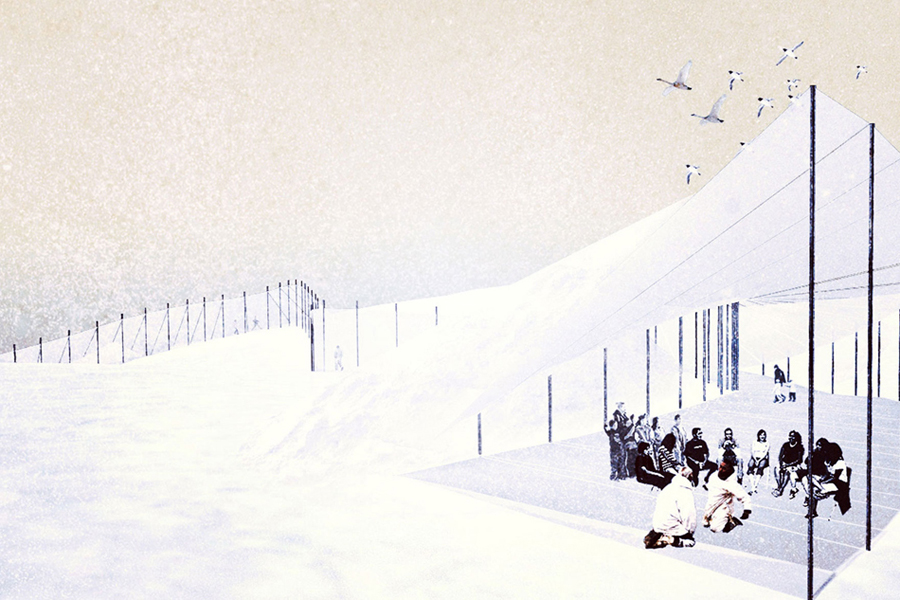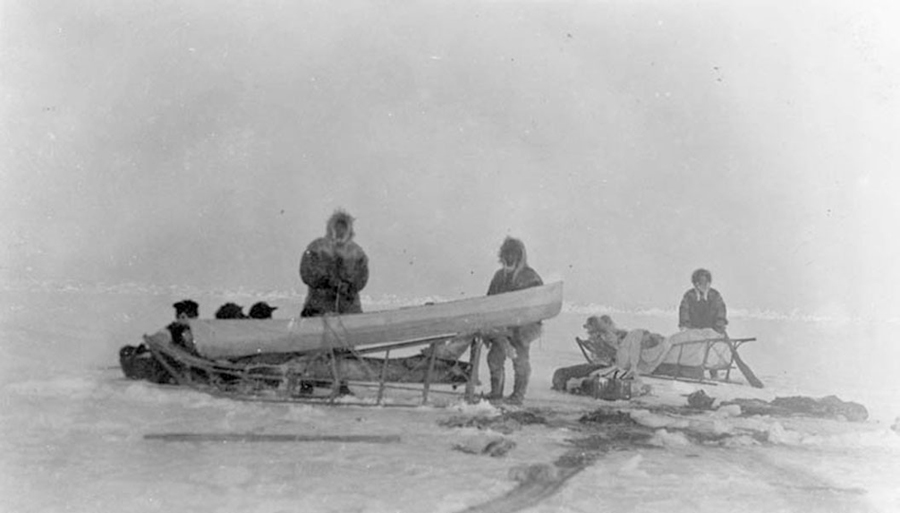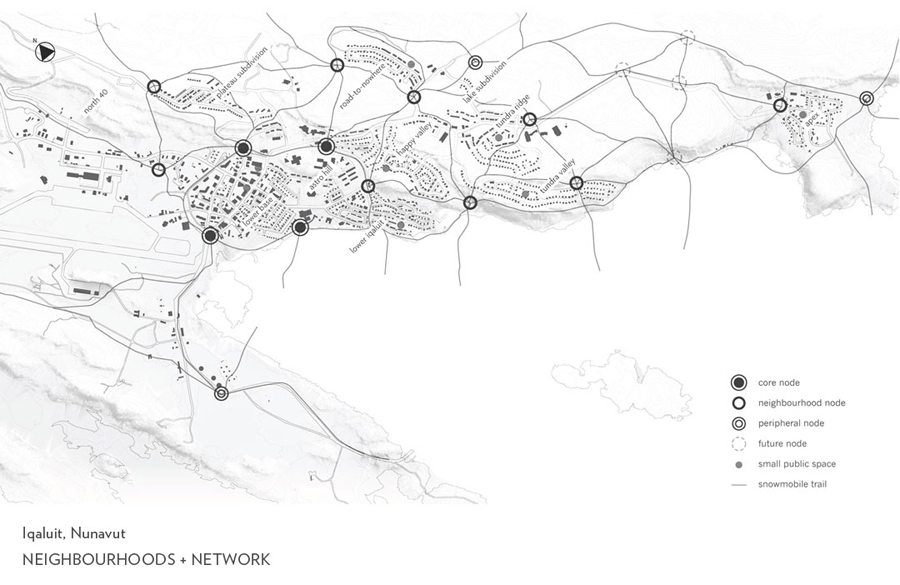(02 True North)



True North
What — In a rapidly urbanizing Arctic city, a network of outdoor cultural spaces in and around the city creates opportunities for sharing old traditions and new experiences between cultures and generations.
Where — Iqaluit, Nunavut (2010)
I saw a picture today, in the pages of a book. It spoke of many memories of when I was still a child: Snow covered the ground, And the rocky hills were cold and gray with frost. The sun was shining from the west, And the shadows were dark against the whiteness of the hardened snow. My body felt a chill Looking at two Inuit boys playing with their sleigh, For the fur of their hoods was frosted under their chins, From their breathing. In the distance, I could see at least three dog teams going away, But I didn't know where they were going, For it was only a photo. I thought to myself that they were probably going hunting, To where they would surely find some seals basking on the ice. Seeing these things made me feel good inside, And I was happy that I could still see the hidden beauty of the land, And know the feeling of silence.
– A. Ipellie (How Noisy They Seem)
Collective Identity: Past + Present
Alootook Ipellie (1951-2007) was an Inuit artist and writer from Iqaluit who through his lifetime witnessed the vast transitions faced by his community over the latter half of the twentieth-century. Through a government relocation and resettlement program, many communities were separated and many were left to face an unfamiliar, unstable way of life lasting over the course of decades. These events have not only become a part of their stories, but have in many ways shaped their lives today. Individuals and Inuit groups have spoken of their fractured communities and gradual disappearance of their collective identity and have been taking steps to gain it back.
Today, the Inuit population is becoming increasingly urban. Iqaluit, Nunavut's capital city, is rapidly urbanizing and has the largest Inuit population in the Inuit Nunaat territory. In addition to the Inuit who continue to migrate from surrounding communities, 40% of the population consists of Southerners. A growing reason for the recent migration of Inuits to urban centres is the hope for a better life through employment, education, health and social resources and participation in the global economic market. This, of course, presents a profoundly different way of life and a foreign set of values. From a fractured past to modern urban conditions, the Inuit have continued to look for ways to adapt old traditions to new conditions and to rebuild the strength of their communities; as Ipellie's poem suggests, they are people of the land and it is something they are unwilling to forget.







A Network of Culture: Snowmobiles + Snow Fences
Presented with the task of designing snowmobile trails for the city, we travelled to Iqaluit to experience the landscape and speak with city officials and its residents. We discovered the need for more public spaces and the desire to preserve their rich cultural heritage and subsistence-based way of life. The proposal consists of a network of public spaces linked by snowmobile trails through the use of the snow fence – a familiar and simple technology commonly used in Iqaluit for the protection of neighborhoods by diverting and “catching” snow and wind.
The system of trails were developed and informed by interpolating existing trails, and through public consultation with hunters and community members. The hierarchy of outdoor public spaces/nodes were based on the current lack of gathering spaces in the city and their culture of the land. They were proposed in key areas with programs drawing from immediate civic and spatial surroundings and the intersection of Iqaluit’s young population with their cultural history. Core nodes are in the city centre and cater to youth-focused urban activities; neighbourhood nodes are primarily recreational with the purpose of gathering people between the rather dispersed neighbourhoods; peripheral nodes offer shelter and support for predominantly hunting-related and group activities. Designs reference familiar materials such as wood, canvas and snow itself, drawing from the principles of the snow fence and snow drift formation. This scheme attempts to provide a platform for the sharing of age-old knowledge as well as the sharing of new experiences between generations and cultures, in hopes of bridging their identity with their now modern urban existence.





Designing a Snow Drift
By studying the basic principles of snow drift formation using prototypical models of the snow fence, we were able to use the logic to design snow drift formations through playing with select variables of the snow fence. The snow drift and snow fence are equally integral to the use of the outdoor nodes: Both may simultaneously take on the role of the playful and recreational component as well as the performative and protective role as shelter, insulation and enclosure.

Case Nodes
Neighbourhood Node: Berry-Pick Park
This space situates itself on a hill overlooking beautiful Frobisher Bay at a pivotal point between Happy Valley, Lower Iqaluit and Astro Hill. A modular canvas snow fence that references summer hunting tents, uses varying angles in relation to the slope of the hill to protect from snow and wind. It winds up towards a sloping pavilion at the top of the hill offering views, respite and a space to gather. The best feature of the site, however, is the crop of blueberries and crowberries that naturally grow on the hill and are traditionally harvested at the end of summer.
Peripheral Node: Hunting + Gathering
An open space situated at the periphery of Lake Subdivision neighbourhood and on an existing hunting snowmobile route, this node provides shelter and space for hunters to unload, skin and store their hunt on the way back, to refuel snowmobiles, as well as a place to gather. The structures use wooden ribs spaced incrementally apart to shield against wind and snow and allow snow drifts to form in key areas, providing additional insulation and enclosure for the hunters.